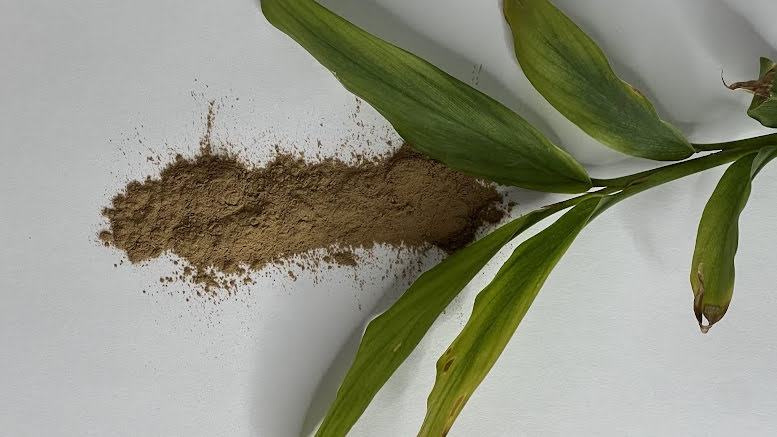Galangal, also known as blue ginger, is the root of a plant from the ginger family. In Laos and Indonesia, it’s called galangal, while in Thailand, it’s known as ka or kha, and in Malaysia, it’s referred to as lengkaus.
Resembling ginger, galangal has a distinctive sour and peppery flavor. Its pink shoots and brown skin help differentiate it from ginger.
Iranian and Southeast Asian cuisines often utilize galangal for its unique flavor, particularly in soups and curries. It’s commonly used to season meats, poultry, seafood, and vegetarian dishes, though it’s typically removed before eating, unlike ginger.
In addition to its culinary uses in curries, galangal is also employed to make vinegar, beer, and other liquors, a practice dating back centuries in Russia.
In Asian cuisine, particularly in Southeast Asia, galangal holds a revered place as a key ingredient in numerous dishes. From Thai tom yum soup to Indonesian rendang, galangal adds depth and complexity to recipes, infusing them with its distinctive flavor profile. Whether used fresh, dried, or powdered, galangal contributes its unique aroma and taste to a wide array of Asian culinary creations, enriching dishes with its bold and aromatic essence.
Usage and Storage
Fresh galangal may not be as readily available in major supermarkets like its ginger cousin. However, it can often be found at Asian grocers or specialty food stores. When selecting fresh galangal, look for firm, unblemished roots with a strong, aromatic fragrance.
For those unable to find fresh galangal, there are several alternatives. Powdered galangal, available in the spice section, is a convenient substitute that retains much of the root’s distinctive flavor. Although the powdered form is less pungent than fresh, it still imparts the characteristic sour and peppery notes essential to many dishes. Additionally, frozen galangal is available at some Asian markets and can be a good alternative, providing a closer flavor profile to the fresh root.
When substituting, keep in mind the differences in flavor intensity. Fresh galangal is more vibrant and aromatic, while powdered or dried forms are milder. As a rule of thumb, use about one teaspoon of powdered galangal to replace one tablespoon of freshly grated galangal.
Culinary Uses and Flavor Profile
Galangal is celebrated for its robust and complex flavor, which sets it apart from ginger. Its unique taste—often described as a blend of citrusy, piney, and earthy notes with a hint of heat—makes it a staple in many traditional dishes. In Thai cuisine, galangal is indispensable in creating the rich, aromatic base of tom yum soup and tom kha gai. These soups rely on galangal’s depth to balance the spiciness of chilies and the creaminess of coconut milk.
In Indonesian cooking, galangal is a crucial component of rendang, a slow-cooked beef stew that combines the root with coconut milk, lemongrass, and a blend of spices to achieve its rich, layered flavor. Similarly, Malaysian laksa, a spicy noodle soup, benefits from the aromatic qualities of galangal, which meld seamlessly with the other herbs and spices.
Beyond soups and stews, galangal is also used in marinades for grilling meats and seafood, enhancing the overall flavor profile. Its versatility extends to vegetarian dishes, where it can elevate the taste of vegetable curries and stir-fries.
Alternatives and Flavor Differences
When fresh galangal is unavailable, ginger can serve as a substitute in a pinch. However, be aware that ginger lacks the same citrusy undertones and intense spiciness of galangal. To mimic galangal’s flavor more closely, combine ginger with a bit of lime zest or lemon juice to add the missing citrus notes.
Another alternative is to use a mix of ginger and ground white pepper, which can help replicate the peppery aspect of galangal. For recipes requiring the unique depth of galangal, consider using lemongrass or kaffir lime leaves alongside ginger to better capture the complex flavor profile.
In summary, while fresh galangal might not be as accessible as ginger, its distinctive taste and aromatic qualities make it a vital ingredient in many Asian cuisines. Whether using fresh, dried, or powdered forms, or opting for creative substitutes, galangal’s presence in a dish is sure to enhance its flavor and authenticity.

